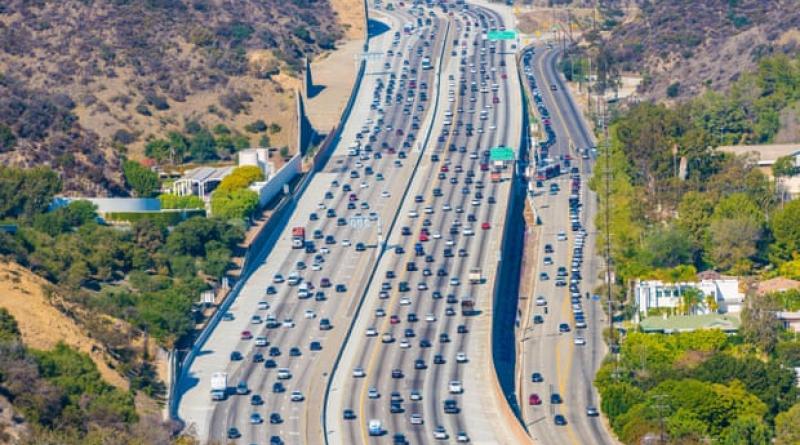Asphalt roads make city air pollution worse in summer, study finds.

Scientists find 300% increase in harmful particulates emitted during hot weather.
Emissions from asphalt are a significant source of air pollutants in cities, especially in hot weather, a study shows.
Researchers found that when asphalt was exposed to hot summer conditions it resulted in a 300% increase in emissions of secondary organic aerosols (SOA), an air pollutant known to have significant impacts on public health.
Researchers from Yale University, Carnegie Mellon University and the Max Planck Institute for Chemistry collected asphalt, found commonly in roads, roofs and driveways, and heated it to between 40C and 200C in a tube furnace.
They observed that asphalt emissions doubled when the temperature increased from 40C to 60C — levels the material often reaches in summer.
“A main finding is that asphalt-related products emit substantial and diverse mixtures of organic compounds into the air, with a strong dependence on temperature and other environmental conditions,” said Peeyush Khare, a PhD candidate at Yale and lead author of the study published in the journal Science Advances.
Paved areas make up approximately 45% of surfaces in US cities, with building roofs making up another 20%, making asphalt a significant part of the urban landscape. The researchers compared their findings with formation of SOA inLos Angeles, a key city for urban air quality case studies.
Previous studies have estimated that a substantial fraction of pollutant compounds in Los Angeles come from sources other than vehicles. While emissions from motor vehicles are likely to decrease over time as the most egregious polluters are phased out, the researchers say asphalt emissions may contribute to air pollution as urban areas expand and climate change drives temperatures higher.
“We found that emissions from asphalt were strongly dependent on both temperature and solar exposure,” explained Drew Gentner, an assistant professor of chemical and environmental engineering at Yale and one of the researchers who worked on the study.
“Hotter, sunnier conditions will lead to more emissions. Additionally, in many locations, asphalt is predominantly applied during the warmer months of the year.”
Gentner said although the impact of emissions from asphalt on ozone formation was minimal compared with motor vehicles in urban areas, research into road asphalt is an important part of tackling the climate emergency.
“It’s another important non-combustion source of emissions that contributes to SOA production. Volatile chemical products, such as cleaning products or paints, have the largest overall estimated contribution to SOA in Los Angeles. So, one has to consider the full scope of reactive pollutant sources and regional differences when making any decisions related to urban air quality planning,” he said.
Dr Gary Fuller, senior lecturer in air quality measurement at Imperial College London, said: “We already know road surfaces are an increasingly important source of air pollution. We have historically thought of traffic pollution as coming from vehicle exhausts. This has been the focus of policy and new vehicles have to be fitted with exhaust clean-up technologies.
“With heavier and heavier vehicles, the combined total of particle pollution from road surface, brake and tyre wear is now greater than the particle emissions from vehicle exhaust but there are no policies to control this,” he added.
2 September 2020
The Guardian





